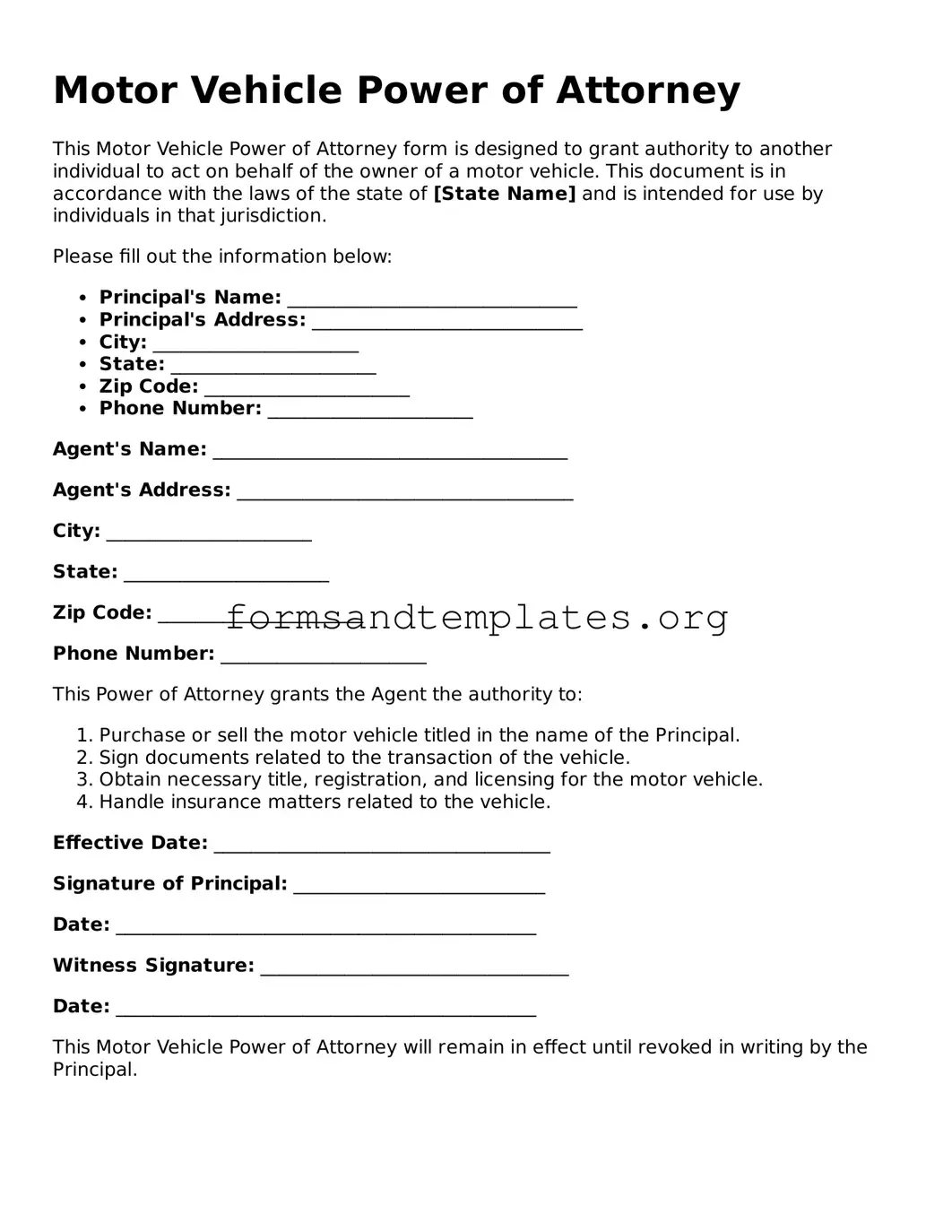Motor Vehicle Power of Attorney
This Motor Vehicle Power of Attorney form is designed to grant authority to another individual to act on behalf of the owner of a motor vehicle. This document is in accordance with the laws of the state of [State Name] and is intended for use by individuals in that jurisdiction.
Please fill out the information below:
- Principal's Name: _______________________________
- Principal's Address: _____________________________
- City: ______________________
- State: ______________________
- Zip Code: ______________________
- Phone Number: ______________________
Agent's Name: ______________________________________
Agent's Address: ____________________________________
City: ______________________
State: ______________________
Zip Code: ______________________
Phone Number: ______________________
This Power of Attorney grants the Agent the authority to:
- Purchase or sell the motor vehicle titled in the name of the Principal.
- Sign documents related to the transaction of the vehicle.
- Obtain necessary title, registration, and licensing for the motor vehicle.
- Handle insurance matters related to the vehicle.
Effective Date: ____________________________________
Signature of Principal: ___________________________
Date: _____________________________________________
Witness Signature: _________________________________
Date: _____________________________________________
This Motor Vehicle Power of Attorney will remain in effect until revoked in writing by the Principal.
